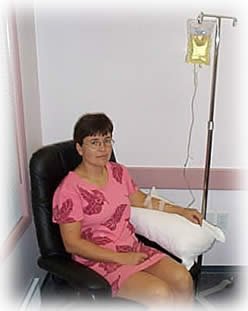Among the most prominent methods of chelation therapy used in clinical practices are EDTA (ethylenediaminetetraacetic acid) and DMSA (dimercaptosuccinic acid)
EDTA is the most widely recognized chelating agent. Its primary function is to bind lead and other heavy metals, facilitating their excretion through the urine. EDTA operates by forming stable water soluble complexes with metal ions which enables the elimination from the body.
EDTA is commonly used in treating lead poisoning but has also found applications in cardiovascular disease where it can help reduce arterial plaque and calcium deposits.
Intravenous infusions are considered the most effective method of chelation therapy, as they deliver the chelating agent directly into the bloodstream. However, IV administration requires specialised equipment and trained medical personnel, which may not be easily accessible in some settings. Furthermore, this method can involve potential complications, such as infection at the injection site or allergic reactions to the chelating agent.

Intravenous chelation therapy is generally performed at a clinic, the patient receives a treatment two times per week for fifteen weeks, with each treatment taking approximately 3 to 4 hours, this is just one of the Methods of Chelation Therapy which is the most expensive and time consuming, it is necessary to have around 20 to 30 treatments.
Although the absorption rate is 100% IV may not be appropriate for everyone, considering the high cost, the time involved and the lack of experienced Clinics that perform the procedure.
If not properly administered it can be very hard on the body, especially for people with kidney problems.
Oral medications present a more convenient and patient friendly option for chelation therapy. Patients can take these medications at home without the need for additional medical supervision.
However, the onset of action for oral agents is slower compared to IV infusions, as they must first pass through the digestive system before entering the bloodstream. But be aware that not all chelating agents are absorbed effectively when taken orally, which does impact the overall success. In this case oral liquids are much faster to absorb (up to 95%) against pills or tablets which can only absorb up to 20% at the best.
Suppository Method of Chelation Therapy
Suppositories have a good absorption rate however for obvious reasons can be a little awkward to administer, some users have reported a burning sensation which can be uncomfortable and reports have emerged that it could cause damage to the lining of the colon and rectum from the direct application.

Oral Liquid EDTA : Methods of Chelation
Cardio Renew Oral liquid EDTA is a concentrated liquid which you add to water or juice and take over a period of 6 weeks, the absorption qualities of this form is up to 95%. It is the most cost effective way of administering with absorption levels close to IV treatments and at a fraction of the cost.
EDTA has proven in the TACT trials to be safe and Oral EDTA is easy to take at home in your own time against IV Chelation.